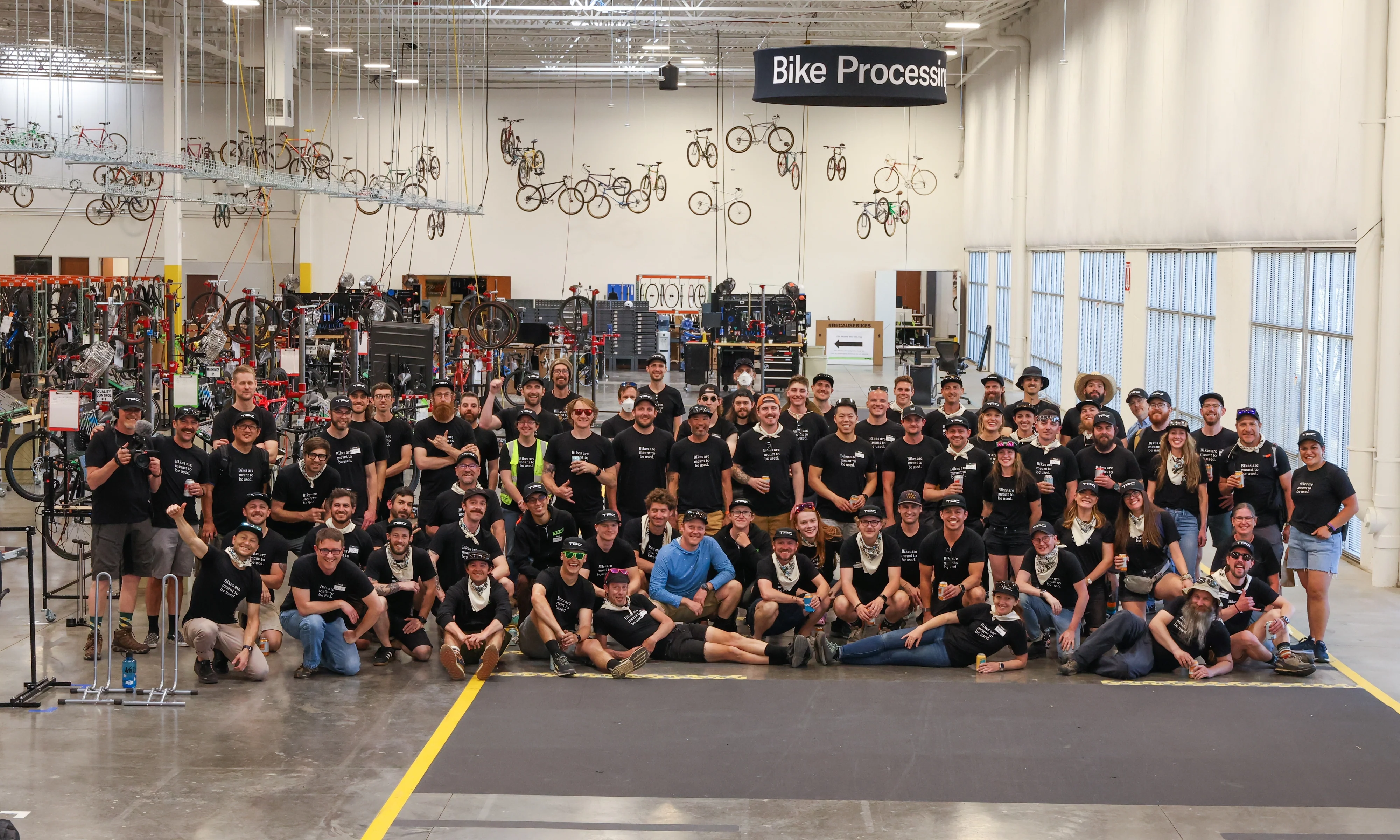When people think of Rocky Mountain Bicycles, they probably imagine riding skinnies on wet North Shore trails or the steep, dusty slopes of Kamloops. This Canadian brand has been at the heart of mountain biking for 40 years, and is now a global powerhouse. But maybe you don’t know the whole Rocky Mountain story ... yet. Here’s what you need to know, and why you should think about riding a Rocky Mountain.
[button]SHOP ROCKY MOUNTAIN[/button]
Rocky Mountain made the first Canadian mountain bike
 Canada was perhaps the first country outside of the United States to be exposed to mountain biking. In the late-’70s and early-’80s, West Point Cycles in Vancouver, British Columbia began importing bikes built by the legendary Tom Ritchey, and it quickly became the center of Canadian mountain biking.
Canada was perhaps the first country outside of the United States to be exposed to mountain biking. In the late-’70s and early-’80s, West Point Cycles in Vancouver, British Columbia began importing bikes built by the legendary Tom Ritchey, and it quickly became the center of Canadian mountain biking.
Within this shop, worked the three soon-to-be Rocky Mountain founders: Grayson Bain, Jacob Heilbron, and Sam Mak. They took an interest in the sport and began modifying Nishiki road bikes with wider tires, straight bars, and thumb shifters. Ready to go all in on designing their own mountain bike, the three men founded Rocky Mountain Bicycles in 1981. They joined Tom Ritchey in Japan to select components and tubesets and over the next year developed Canada’s first homegrown mountain bike: the Sherpa.
[newsletter]
Rocky Mountain was behind the freeride movement
Without Rocky Mountain, we might all still be riding XC bikes. Rocky Mountain’s “Froriders,” Richie Schley, Wade Simmons, and Brett Tippie were the godfathers of the ‘90s freeride movement. The Frorider name came from a 1998 Rocky Mountain ad where the trio wore afro wigs in response to the threat of legal action from Cannondale, which was trying to trademark the freeride name.
"The Moment" documents Simmons, Schley, Tippie, and the rise of freeride.
The Frorider’s became known for daredevil antics that often ended with broken frames. To handle their wild new style of riding, they needed tougher bikes. Fortunately, Rocky Mountain was already building bikes for the technical trails of Vancouver’s North Shore. After signing on, Rocky Mountain tasked the Froriders with producing photographs and video of themselves riding in extreme situations. They revolutionized mountain biking with movies that showed them hucking off cliffs, jumping over monster trucks, and riding skinny bridges, things that the rest of the mountain biking world had scarcely considered doing.
The Froriders brought a new fun-loving attitude to the sport. Racing took a backseat to road trips, big drops, style, and baggy shorts. Then in 2001, Wade Simmons cemented Rocky Mountain’s freeride reputation by winning the inaugural Red Bull Rampage in Virgin, Utah. Rocky Mountain continues to sponsor Simmons, as well as an impressive roster of professional riders, including top freeriders Thomas Vanderham, Carson Storch, and Vaea Verbeeck.
[button]SHOP ROCKY MOUNTAIN[/button]
Rocky Mountain still has racing heritage
Though freeride has been at Rocky Mountain’s core for nearly 30 years, it didn’t ignore racing. In 1992, cycling legend Alison Sydor, won Canada’s first World Cup aboard a Rocky Mountain. Rocky Mountain bikes have been ridden to multiple Canadian national XC titles and in the mid-’00s, the Rocky Mountain Bicycles/Crystal Decisions Team dominated mountain bike stage racing with multiple wins and podiums in the Trans-Alps, Cape Epic, and Trans-Rockies.
Now, the Rocky Mountain/Race Face Enduro team represents the brand in the Enduro World Series with race winner and championship contender Jesse Melamed, as well as regular podium threats Remi Guavin and Andréane Lanthier Nadeau. The team documents their exploits in The Jank Files, which gives riders a behind-the-scenes look at the pro enduro scene.
Rocky Mountain gave us Race Face components
 Though now owned by Fox Factory, Race Face got its start thanks to Rocky Mountain. In the early-’90s, mountain biking was in its heyday and daring North Shore riders were regularly breaking bikes and components. Rocky Mountain founder, Grayson Bain recognized the need for tough, high-quality cranks and other components and started Race Face Bicycle Components in 1996. Over the last 15 years it has grown from Rocky Mountain’s house brand into one of the biggest and most popular component manufacturers in the world.
Though now owned by Fox Factory, Race Face got its start thanks to Rocky Mountain. In the early-’90s, mountain biking was in its heyday and daring North Shore riders were regularly breaking bikes and components. Rocky Mountain founder, Grayson Bain recognized the need for tough, high-quality cranks and other components and started Race Face Bicycle Components in 1996. Over the last 15 years it has grown from Rocky Mountain’s house brand into one of the biggest and most popular component manufacturers in the world.
[button]SHOP RACE FACE[/button]
Without Rocky Mountain Bicycles, modern mountain biking would look very different. Its impact on the sport is reason enough to look at what it has to offer. No matter what you want to ride, or where your riding takes you, there’s a Rocky Mountain bike for you.
[button]SHOP ROCKY MOUNTAIN[/button]

























